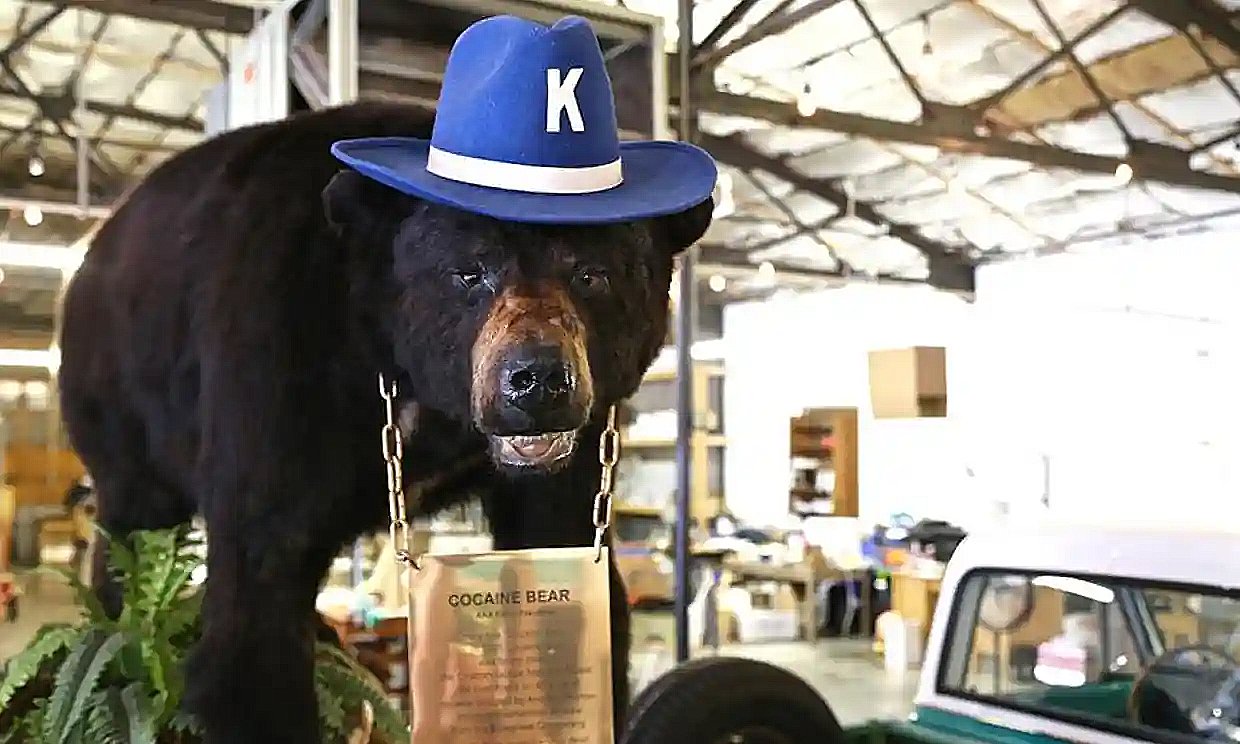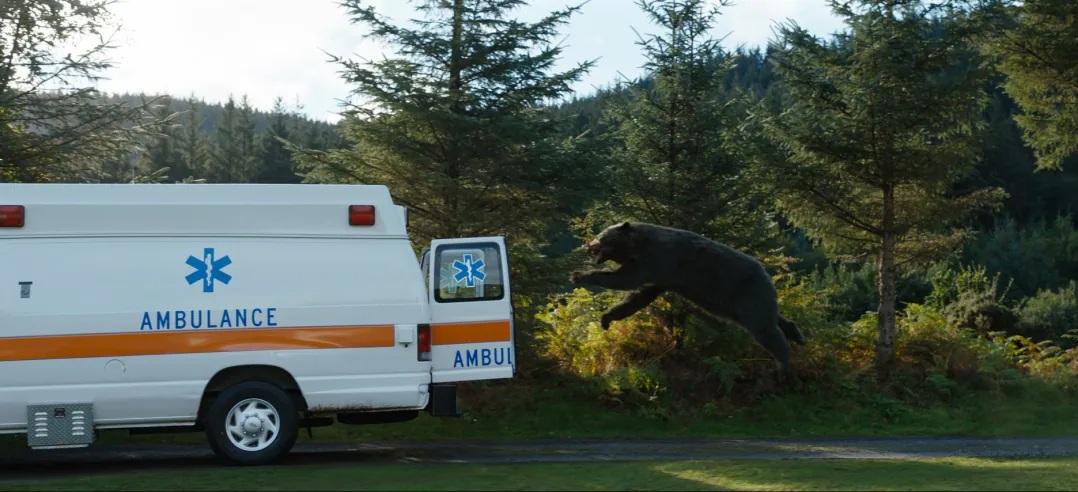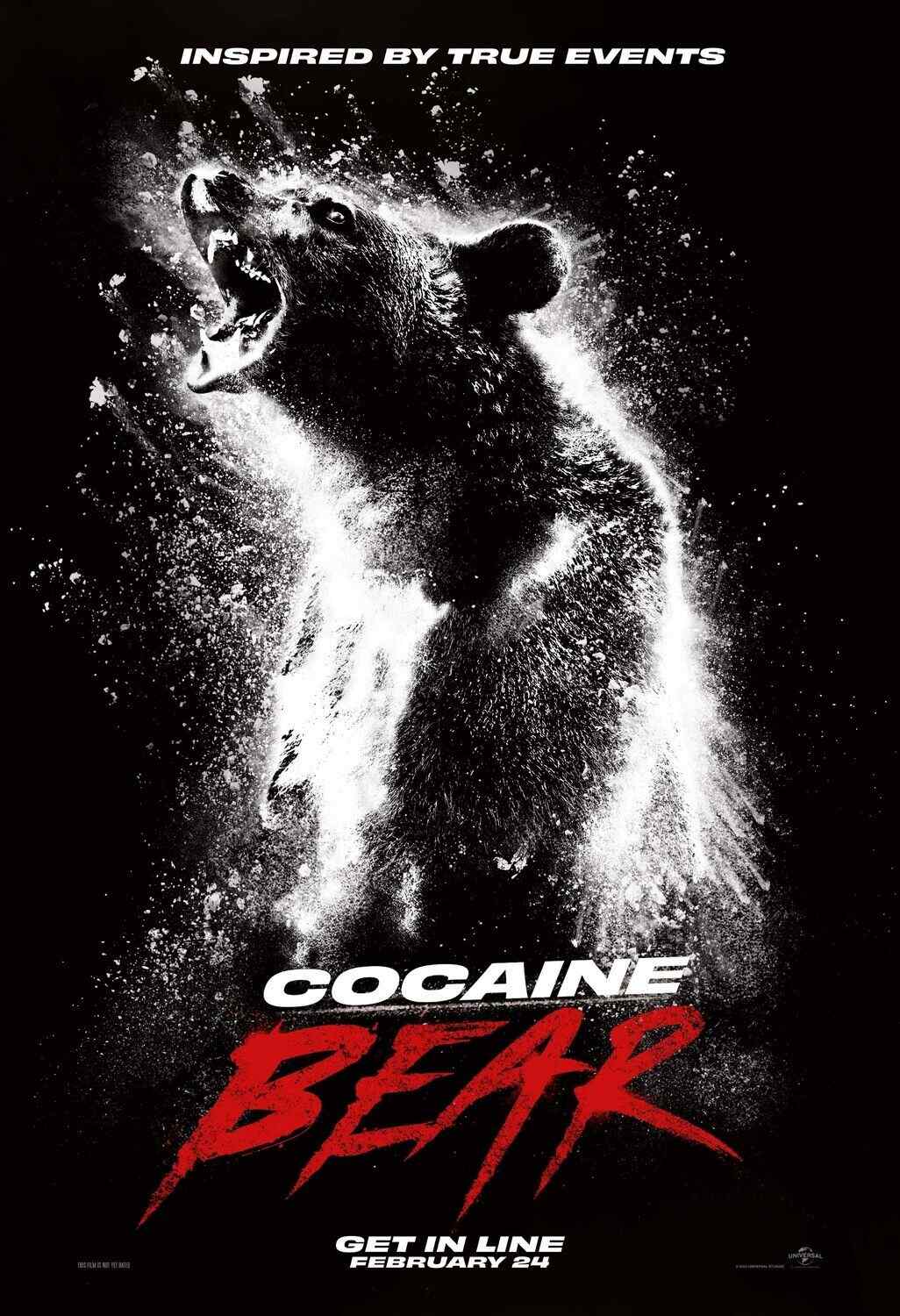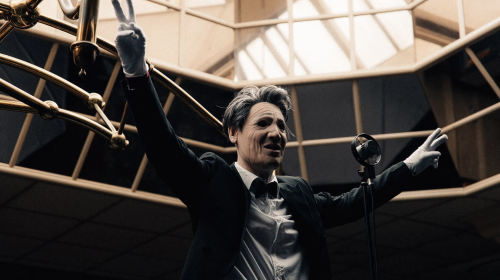Cocaine Bear is the latest film from director Elizabeth Banks. It is loosely based on the true story of a bear ingesting cocaine. Unlike the story it’s based off of, the movie is an exaggerated tale of a woodland creature going on a murderous rampage. As opposed to other Hollywood films, Cocaine Bear is a surprising departure from the norm. It ended up surpassing box-office expectations opening weekend to bring in $28 million dollars world-wide.
The True Story of Cocaine Bear
In 1985, a black bear in Georgia was found dead next to a duffel bag that was previously filled with 70 pounds of cocaine that a drug smuggler had thrown from his plane. When investigators found the bear, the bag was torn open with 40 empty packets scattered around the body. The bear had literally filled its body to the brim with cocaine and died of a horrific overdose. Eventually, the black bear was made into taxidermy and named Pablo Escobear, after the famed Colombian drug lord. Today, it sits on display at a mall in Lexington, Kentucky.

The real Cocaine Bear, aka, Pablo Escobear, now on display at Kentucky Fun Mall in Lexington. | Photo by KYforKY via The Guardian.
Cocaine Bear the Movie (2023)
The main plot of the movie, outside of a coked-up bear murdering civilians, focuses on a couple of a subplots. One of those plots involves a mother named Sari (Keri Russell) looking for her daughter Dee Dee (Brooklynn Prince) in the Chattahoochee National Park in Georgia after she skips school with a friend to visit the waterfall. Another subplot involves a drug king pin named Syd (the late Ray Liotta, whom the film was dedicated to) sending his fixer Daveed (O’Shea Jackson Jr) and his son Eddie (Alden Ehrenreich) to retrieve packets of cocaine that were dropped inside the Chattahoochee National Park Forest.
Some of the Highlights
Originally, I was bearish on the idea of having multiple subplots take up the majority of the movie, but they surprisingly work out well as the characters are well written and interesting. Cocaine Bear is also historically accurate when it comes to portraying drugs as a menace to society. Multiple anti-drug PSA’s play towards the beginning of the movie and Syd is portrayed as a typical power hungry drug lord.
During the coke fueled rampages, the bear looks realistic and scary while brutally attacking its prey. There’s one scene in particular towards the middle of the film involving an ambulance that is particularly grizzly. For as violent as the bear attacks are, they are not cartoonish. Even though the gore looked more realistic and gruesome, you could still tell it was CGI. It gave the movie a fantastic B-grade quality. The mostly retro soundtrack pulls everything together to create a thrilling story that’s enjoyable to watch and doesn’t feel like it’s trying too hard to be serious.
There is an assumption that Elizabeth Banks would have made the film as flamboyant as possible given the outlandish title. However, to the films credit, it decides to take the most realistic route in an otherwise bizarre situation. There is a splash of light-hearted humor throughout. At one point you even get to see a black bear snort a line of cocaine off of a guy’s severed leg. Although, it was a big disappointment that Isiah Whitlock Jr. doesn’t say his classic Clay Davis catchphrase “Sheeeeeeeeeeeeit,” he does give one of the best performances of the entire film.

The moment that Cocaine Bear leaps into the back of an ambulance during the film. | Universal Studios
The Comedown
Where Cocaine Bear‘s high starts to wear off is the ability for further analysis beyond its face value. I’m not expecting a movie with a premise like this to be an artistic masterpiece, but it is hard to imagine this film being remembered for anything outside of its premise years from now. When art is made to shock, it is more shocking than it will be remembered.
In terms of this film’s larger impact on drug culture, it probably won’t impact decriminalization efforts on drugs like cocaine as the film is not against or for the usage of cocaine. It does, however, depict the usage of cocaine by both children and animals. The politics of Cocaine Bear represent the majority of Americans, unclear. What is clear, though, is that viewers are addicted to movies with simple yet intriguing premises that don’t require a sharp focus.
Overall, if you are looking for a mindless flick to enjoy, Cocaine Bear will be right on the nose for you. However, if you are an individual who considers themselves to be a sort of film connoisseur and require depth, then I would say no to drug films like this one.









